Join More Than 50,000+ Subscribers and get latest camera news and rumors
NEW CAMERA VIDEOS ON YOUTUBE
Download Our Android App
|
By admin, on October 18th, 2024
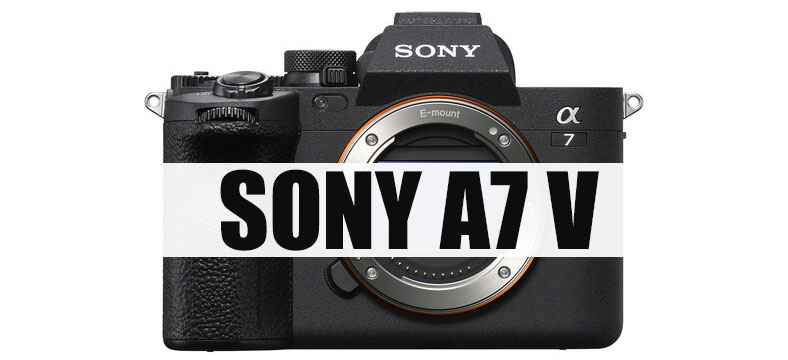
Updated information we do not have confirmation that the Sony A1 Mk II camera is coming on NOV 19-20, take a look at the latest set of information we have
The camera we are expecting to Arrive from Sony
- Sony A7 V [Early 2025 with a 44.5Mp sensor as per rumors]
- Sony FX3 II
- Sony A7S IV [Sony next announcement after A1 Mark II]
- Sony ALpha A II [Confirmed for Sony Nov 19 announcement ]
According to the latest, Sony is about to announce a brand new camera at the end of November. By the way, we told you about the NOV announcement back on September 11; check this out. So everyone is curious about “what it will be?” What we truly expect from Sony right now, at this very moment, is the announcement of the Sony A7 IV successor, the Sony A7 V camera.
After the Nikon Z6 Mark III announcement, we are also concerned that Canon’s R6 Mark III, with the R3-stacked sensor, will surely come next year as per rumor mills. So, a new generation of Sony A7 IV competitors either arrived or is about to arrive, and among all of Sony’s full-frame cameras right now, the Sony A7 IV is the most outdated Alpha Camera. Still waiting to get a dedicated AI chip, which even Sony A6700 has inside it, that upscales the overall still and video AF performance of the camera.
Even if we follow Sony’s announcement pattern, the A7 IV camera was announced back in October 2021, and since then, Sony has updated almost all the models in its current lineup. So here’s a list of cameras that we expect may arrive from Sony at the end of November or December, or maybe sometime in 2025. But out of all these cameras, we personally think the A7 V is the most important, and Sony should release it as soon as possible.
Let me know in the coments which camera you’re most excited to see ?
Follow us on our social pages FACEBOOK | TWITTER | INSTAGRAM, If you have time –>see more Sony Alpha Rumor
By admin, on October 17th, 2024
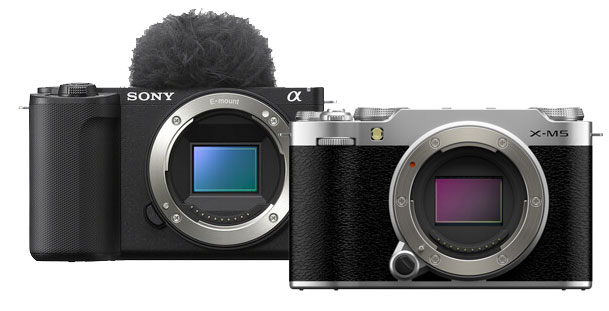
Compare the Sony ZV-E10 II camera against the recently announced Fuji X-M5. We will be comparing the 10 major differences between the two. Not only that, but these are the differences we have sorted out to make it a bit easier to understand instead of putting all comparisons in front of you in a single table. So we have distributed them into 10 different types of tables, so let’s begin.
See more comparisons – Fuji X-M5 vs Sony A6700
1. Camera Design Comparison
| Feature |
Sony ZV-E10 II |
Fuji X-M5 |
| Lens Mount |
Sony E |
FUJIFILM X |
| Built-In Flash |
No |
No |
| Display |
3″ Articulating Touchscreen LCD |
3″ 3-Way Tilting Touchscreen LCD |
| Body Material |
Plastic Body |
Magnesium Alloy |
In the first section, where we compare the camera design and all the details, you can see that the Fuji X-M5 is slightly smaller and a bit lighter than the Sony ZV-E10 II. The biggest advantage I see with the X-M5 is the weather-sealed design and a more durable body
2. Body Weight and Dimensions Comparison
| Feature |
Sony ZV-E10 II |
Fuji X-M5 |
| Body Weight (with battery & media) |
377 g |
355 g |
| Dimensions (W x H x D) |
114.8 x 67.5 x 54.2 mm |
111.9 x 66.6 x 38 mm |
3. Ports Comparison
| Feature |
Sony ZV-E10 II |
Fuji X-M5 |
| HDMI Output |
Micro-HDMI |
Micro-HDMI |
| Audio Input |
1x 3.5mm Microphone Input |
1x 3.5mm Microphone Input |
| Audio Output |
1x 3.5mm Headphone Output |
1x 3.5mm Headphone Output |
| USB-C |
USB 3.2 Gen 1 (Data & Power) |
USB-C (Data) |
The next is the ports comparison. More or less, both have similar kinds of ports—micro HDMI input, headphone, and output port, so connectivity-wise both are quite similar to each other.
4. Camera Sensor Comparison
| Feature |
Sony ZV-E10 II |
Fuji X-M5 |
| Sensor Size |
APS-C (23.3 x 15.5 mm) |
APS-C (23.5 x 15.6 mm) |
| Effective Resolution |
26 MP |
26.1 MP |
| Sensor Crop Factor |
1.5x |
1.5x |
Let’s compare the internal core specifications of the cameras. We have the 26 MP X-Trans sensor on the Fuji side, while the Sony has a 24 MP Bayer pattern BSI CMOS sensor. More or less, we will get similar image quality from both cameras.
No, neither of the cameras has any mechanical stabilization inside them for stills, so you have to be careful while using these cameras.

5. Autofocus Comparison
| Feature |
Sony ZV-E10 II |
Fuji X-M5 |
| Autofocus Points (Photo) |
759 Phase Detection |
425 Phase Detection |
| Autofocus Sensitivity |
-3 to +20 EV |
-7 to +7 EV |
| Autofocus Modes |
Auto, Continuous, Single, Manual |
Continuous, Single, Manual |
The autofocus system of both cameras is super awesome. Still, again, since Sony and Canon are leading in autofocus tracking, as well as if you compare the number of phase-detect autofocus points, the Sony ZV-E10 II has 759 AF points, while the X-M5 remains limited to 425. So, more or less, the tracking performance coming straight out of the Sony camera will be more usable and reliable compared to the Fuji X-M5.
6. Image Stabilization Comparison
| Feature |
Sony ZV-E10 II |
Fuji X-M5 |
| Image Stabilization (Photo) |
No |
No |
| Image Stabilization (Video) |
Digital, Active IS, Gyro |
Digital IS |
On the other side, we have better autofocus sensitivity in the Fuji X-M5, which means the ability to lock focus in backlit situations is better with the X-M5. But again, AF sensitivity doesn’t help much with tracking performance. So both are completely different in terms of tracking and sensitivity. Generally, we rely more on tracking performance rather than sensitivity.
7. Continuous Shooting Speed Comparison
| Feature |
Sony ZV-E10 II |
Fuji X-M5 |
| Max Continuous Shooting |
11 fps (Photo) |
30 fps (Photo with electronic shutter) |
| Max Frames in Burst |
59 (RAW) / 1000 (JPEG) |
23 (RAW) / 128 (JPEG) |
The X-M5 offers 30 fps continuous shooting with the electronic shutter but with some crop. If I select the uncropped mode, the speed drops to 20 fps, which is still better than the Sony ZV-E10 II’s 11 fps continuous shooting mode.
8. Video Resolution Comparison
| Feature |
Sony ZV-E10 II |
Fuji X-M5 |
| 4K Video |
3840 x 2160 at 60 fps |
6240 x 4160 at 30 fps |
| Full HD Video |
1920 x 1080 at 120 fps |
1920 x 1080 at 240 fps |
| Video Bit Depth |
10-Bit |
10-Bit |
Before you come to a decision that you are going to buy a camera with 6.2K resolution, you must first look towards your own personal requirements. If your personal requirements fulfill with 4K recording up to 60 frames per second, then without a doubt, a camera with more than 60fps mode is enough for you. But if you are a short filmmaker or someone who likes to get an open gate video in F-Log2 mode and then later on edit in your editing software, then you should buy the Fuji X-M5 camera. Otherwise, if you are a YouTube content creator or create Instagram Reels, then there is no need to buy a camera with 6K open gate recording.
To be very clear, the Fuji X-M5 does not have the same autofocus tracking performance as the Sony ZV-E10 II.
9. Codecs and Bitrates Comparison
| Feature |
Sony ZV-E10 II |
Fuji X-M5 |
| Codecs |
H.264, H.265, XAVC S |
H.264, H.265, AVC-LongG |
| Bitrates |
100 to 600 Mb/s |
8 to 200 Mb/s |
10. Extra Video Features Comparison
| Feature |
Sony ZV-E10 II |
Fuji X-M5 |
| Log Profile |
Sony S-Log3, S-Cinetone |
FUJIFILM F-Log, F-Log 2 |
| Slow/Fast Motion |
Yes |
Yes |
| Recording Limit |
No Limit |
50 Minutes (4K) (Unlimited in 4k LP low Quality) |
Sony ZV-E10 Mark II camera, despite the fact that the camera doesn’t have a 6.2K open gate recording, gives you a bitrate option of 600 Mbps, whereas a Fuji X-M5 camera with 6.2K open gate recording limits the bitrate to 200 Mbps. So there is a very simple math calculation: more bitrate means more color coming into your footage.
Another big noticeable difference before we jump to the limitations we have to face with each of the cameras is that the Fuji X-M5 in 4K has a recording limit of 50 minutes. Now, the 50-minute recording can only be extended when you are using an LP mode in 4K, which degrades the quality of 4K recording, but it allows you to record for more than an hour. So you have to decide that if you are into podcasting, then select your camera wisely.
10. Video Recording Time Limit and Known Limitations
| Feature/ Limitation |
Sony ZV-E10 II |
Fuji X-M5 |
| 4K Video Recording Time Limit |
No official time limit (subject to thermal control) |
No official time limit (4K) (4k Lp low-quality unlimited recording) |
| Full HD Video Time Limit |
No official time limit |
No official time limit |
| Thermal Management |
Auto shut-off based on temperature settings (standard or high) |
Thermal control to avoid overheating (cut-off) |
| Battery Life (Video) |
Approx. 80 minutes (continuous recording) |
Approx. 60 minutes (4K) |
| Overheating Issues |
Rare in typical conditions |
May occur during extended 4K recording sessions |
| Slow-Motion Recording Limit |
No official limit (depends on settings and battery life) |
Approx. 3 minutes (240 fps Full HD) |
| Continuous Autofocus in Video |
Yes, with Eye and Object Tracking |
Yes, with Eye Detection and Fast AF |
| Internal Recording Bit Depth |
10-Bit Internal recording |
10-Bit internal recording |
| External Recording |
4K 60fps via HDMI output (10-Bit) |
4K 30fps via HDMI output (10-Bit) |
| Rolling Shutter (4K) |
Moderate at 4K 30 fps |
Moderate at 4K 30 fps |
Conclusion and Recommendation
| Category |
Recommended Camera |
Reason |
| Content Creator |
Sony ZV-E10 II |
Fast autofocus and good video quality for engaging content. |
| Reels Creator |
Sony ZV-E10 II |
Ideal for quick, easy short-form video creation. |
| Short Filmmaker |
Fuji X-M5 |
Superior image quality and advanced features for cinematic films. |
| Daily Life Vlogger |
Sony ZV-E10 II |
Compact and user-friendly for spontaneous vlogging. |
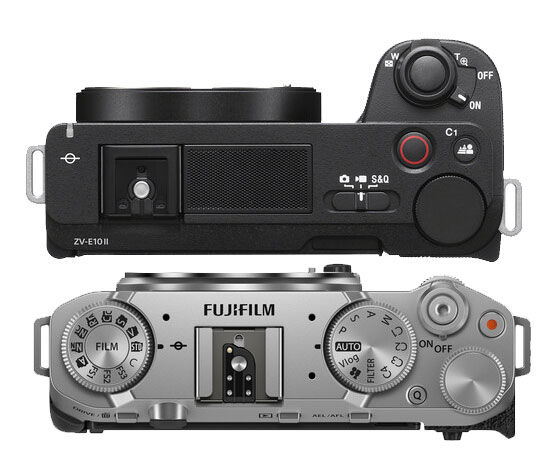
For Photographers
You can buy any one you like since both of them missing EVF and feature the same resolution sensor, but the Sony ZV-E10 offers a better handgrip whereas the Fuji X-M5 is more vlogging-oriented, without a doubt the Sony ZV-E10 II AF tracking performance is better so you can consider that also, on the other side we have film-simulation modes from Fuji which is being loved by many photographers worldwide.
Fuji X-M5 Price
Fujifilm X-M5 Body: $799- B&H Store
Fujifilm X-M5 + XC 15-45 Kit: $799 – B&H Store
Sony ZV-E10 Price
Sony ZV-E10 Mark II $998 [body]- B&H Store – [$1098 with kit at Amazon] Amazon.com
Support us – Use an affiliate link Amazon.com | B&H Store for the next purchase u make – it helps us
Admin Notes: Comparison Updated on – October 2024
Correction log: Updated recording time limit of the Fuji X-M5
By admin, on October 15th, 2024
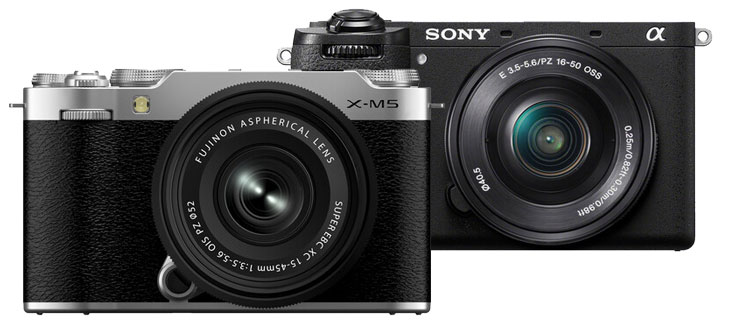
Let’s compare the Fuji X-M5 versus the Sony A6700 camera. We have compared the photographic & videography features in a separate table, so you can easily understand which camera is best for you.
If you are a photographer, which camera should you buy? Again, if you are a content creator, videographer, or wedding filmmaker, which camera should you choose?
Take a look at the specification comparison table below, where we have highlighted the major differences between the two cameras. They also have some similarities, but the good thing is that the Fuji X-M5 camera is able not only to compete but also to uplift the competition bar by upscaling the core specifications.
Fuji X-M5 vs Sony A6700 – 15 Major Differences for Photographers
| Feature |
Fuji X-M5 |
Sony A6700 |
| Sensor Resolution |
26.1 MP APS-C CMOS |
26 MP APS-C Exmor R BSI CMOS |
| Image Processor |
X-Processor 5 |
BIONZ XR |
| ISO Range (Photography) |
160 to 12,800 (Extended: 80 to 51,200) |
100 to 32,000 (Extended: 50 to 102,400) |
| Autofocus Points (Photo) |
425 Phase Detection Points |
759 Phase Detection Points |
| Autofocus Sensitivity |
-7 EV |
-3 EV |
| Continuous Shooting |
Up to 30 fps (Electronic, cropped) |
Up to 11 fps (Mechanical & Electronic) |
| Viewfinder |
No Viewfinder |
2.36M-dot OLED Viewfinder |
| Shutter Speed (Mechanical) |
1/4000 to 30 seconds |
1/8000 to 30 seconds |
| Mechanical Shutter |
Yes |
Yes |
| Image Stabilization |
NA |
5-Axis In-Body Image Stabilization (IBIS) |
| Sensor Type |
Standard CMOS |
Backside Illuminated (BSI) CMOS |
| Weather Sealing |
Yes (Dust & Water Resistant) |
Yes (Dust & Moisture Resistant) |
| Battery Life (Stills) |
Approx. 460 shots |
Approx. 570 shots |
| Weight |
355g (Body Only) |
493g (Body Only) |
| Memory Card Slot |
Single SD UHS-I Slot |
Single SD UHS-II Slot + CFexpress Type A |
Quick Analysis of Specification Differences between the two
The core specifications of the Fuji X-M5 camera look very impressive when compared with the Sony A6700 camera.
If you are a photographer, then of course you will miss the sensor-shift image stabilization in the Fuji X-M5, which is present in the Sony A6700.
Having image stabilization in your camera is really important if you shoot images in low-light environments. The image sensor compensates for hand movements even when you are using a slow shutter speed, resulting in neat and clean images.
Another feature that will help the Sony A6700 camera is the high ISO range, which is expandable from 50 up to 102400.
But wait, we still have some significant differences that might affect your choice. Another big difference for photographers to consider is the continuous shooting speed. If you don’t want any rolling shutter effect visible in your images, you have to use the mechanical shutter, as the electronic shutter can cause rolling shutter effects, especially with non-stacked sensors.
Autofocus Sensitivity and Tracking
Finally, let’s talk about the autofocusing systems of both cameras. We have seen the autofocus sensitivity difference between the two. If you compare them, the Fuji X-M5 camera looks very impressive with -7 EV autofocus sensitivity against the A6700 camera, which has -3 EV autofocus sensitivity. But this autofocus sensitivity only works once to acquire the autofocus point in extremely low-light situations.
Now, let’s consider a situation where quick moment-to-moment focus is needed. In this case, the Fuji X-M5 may focus more quickly compared to the A6700, due to its AF sensitivity. However, when we talk about autofocus tracking performance, due to the higher number of phase-detect autofocus points present in the Sony sensor—approximately 759 compared to Fuji’s 425—the tracking performance of the Sony A6700 sensor will be better than the X-M5.
So, we have two differences here. First, autofocus acquisition is better in the Fuji, but at the same time, the autofocus tracking performance is better in the Sony. Generally, most autofocus modes rely on the tracking performance of the camera, not on the acquisition part, so I would give a slight advantage to Sony in terms of tracking performance.
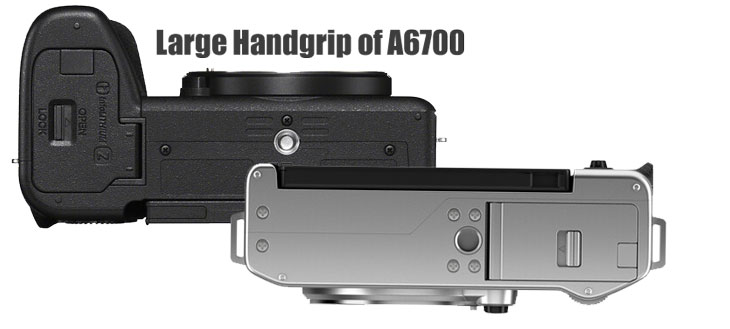
Design and Battery Life
Finally, let’s talk about the design part of both cameras. The Sony A6700 camera hand grip is deeper and much better compared to the Fuji X-M5. At the same time, we have a dedicated OLED viewfinder in the body of the Sony A6700 camera, which helps photographers who are used to using optical viewfinders from DSLRs. So, more or less, if we talk about ease of use and digital body design, the A6700 camera is more user-friendly.
At the same time, if we talk about battery backup, the Sony offers a bigger battery, resulting in more shots per charge—approximately 570+, whereas in Fuji, you are getting around 460. So yes, we do have some differences.
Conclusion: The best camera for photographer
should you go with the Fuji X-M5 or the Sony A6700? We get some extra features from inside to out with the Sony A6700 camera. Have a look:
The positive features of the Sony A6700 include the presence of a sensor-shift image stabilization system, which helps capture clear images in low-light environments. At the same time, the wide ISO range, starting from 50, is completely absent in the Fuji X-M5. Additionally, the A6700 offers a bigger battery life, which makes it a better option for professional photographers.
Not only that, but we also have a very large range of E-mount lenses from Sigma, Tamron, and many other brands. Although the Fuji X-mount is also open, it is not as big or broad as the E-mount at the moment, even though there are many options in X-mount.
Compared to the X-M5, we do see some advantages like autofocus sensitivity and continuous shooting speed. So, if you really want a camera with fast continuous shooting speed and don’t care much about the ISO range, image stabilization system, battery grip, or battery life, then the X-M5 might be a good option. However, for a photographer, we highly recommend the Sony A6700.
Fuji X-M5 vs Sony A6700 – 15 Major Video-Related Differences
| Feature |
Fuji X-M5 |
Sony A6700 |
| MAX Video Resolution |
6.2K up to 30 fps |
4K up to 120 fps |
| Slow-Motion Video |
1080p at 240 fps |
4K at 120 fps, FHD at 240 fps |
| Video Codec |
H.264/H.265 (HEVC) |
H.264/H.265 (HEVC), XAVC S-I |
| Video Bitrate |
400 Mb/s |
600 Mb/s |
| Video Recording Limit |
50 minutes in 4K |
No Recording Limit |
| Log Profiles |
F-Log, F-Log 2 |
S-Log 3, S-Cinetone |
| Autofocus Points (Video) |
425 Phase Detection Points |
759 Phase Detection Points |
| Autofocus Features |
Face/Eye Detection |
Real-time Tracking, Eye AF for Video, AI framing |
| External Recording |
4:2:2 10-bit via HDMI |
4:2:2 10-bit via HDMI |
| Viewfinder for Video |
No EVF |
Yes, 2.36M-dot OLED Viewfinder |
| Display Type |
3-Way Tilting LCD |
Fully Articulating LCD |
| Video Stabilization |
Electronic |
5-Axis IBIS + Active Mode for Video + Gyro |
| Audio Inputs |
3.5mm Mic Jack, 3.5mm Headphone Jack |
3.5mm Mic Jack, 3.5mm Headphone Jack |
| Mobile Streaming |
No |
Yes (IP Streaming 4K) |
video core specifications
Let’s compare the video core specifications between the Fuji X-M5 and the Sony A6700 cameras.
We have an open gate option in the Fuji X-M5, which videographers will love, especially for professional filmmaking, allowing them to decide the format and ratio for an entire scene. It’s better to record in open gate. In addition, we have options like Full HD mode at 240 frames per second for capturing slow-motion videos.
However, if you compare the X-M5’s features against the Sony A6700, you will miss the higher-resolution open gate mode. But aside from that, the Sony A6700 offers 4K @ 120 frames per second and can also record Full HD videos at 240 frames per second. The bitrate is approximately 600 Mbps, which is better than the X-M5’s 400 Mbps, even though Fuji offers a 6.2K open gate recording option.
A higher bitrate means more color information, and this will definitely help Sony users a bit more. In addition, we have a dedicated AI chip in the Sony A6700, which enhances autofocus tracking performance in video mode, including AI-based auto framing.
The good news is that Fuji is also improving their autofocus modes in the new X-M5 camera. Similar to Sony, they have introduced a product feature mode in the X-M5, showing Fuji is slowly trying to compete with Sony’s features in the A6700 camera.
Aside from all these features, the Sony A6700 has a 2.36-million-dot electronic viewfinder, which may not directly help with filmmaking, but is still a useful feature. However, the biggest factor is the presence of a sensor-shift image stabilization system.
With sensor-shift image stabilization, we can use active mode in video on the Sony camera to achieve smooth and stable footage. Sony also offers a gyro-based image stabilization system, which can smooth out footage like a GoPro when processed with special software.
Conclusion – Best Camera for Video
When you compare all these features, the Sony A6700 looks more appealing. However, if you are a Filmmakers (Independent or Short Films) prefer the open-gate recording format, you can go with the Fuji X-M5. But if you’re asking which one is more usable and practical camera, for
- For Wedding Cinematographers
- For Traditional Videographers (Corporate, Documentaries):
- For Content Creators
The Sony A6700 is more usable, with its 4K 120 FPS mode, advanced autofocus tracking with a dedicated AI chip, and hybrid image stabilization, which is the better option. The Sony A6700 simply offers a more advanced set of features.
Final Recommendations:
- Fuji X-M5 is recommended for filmmakers who need open gate recording and prefer high-resolution control.
- Sony A6700 is a all-in-one all-rounder for content creators, wedding cinematographers, and traditional videographers, features advanced autofocus, 4K 120 FPS, and Excellent stabilization features.
Fuji X-M5 Price
Fujifilm X-M5 Body: £799 / €899- B&H Store
Fujifilm X-M5 + XC 15-45 Kit: £899 / €999 – B&H Store
Sony A6700 Price
Sony A6700 Body: $1398 B&H Store | Amazon.com
Sony A6700 with Kit Lens: $1498 – B&H Store and Amazon.com
Support us – Use or affiliate link Amazon.com | B&H Store for the next purchase u make – it helps us
By admin, on October 9th, 2024
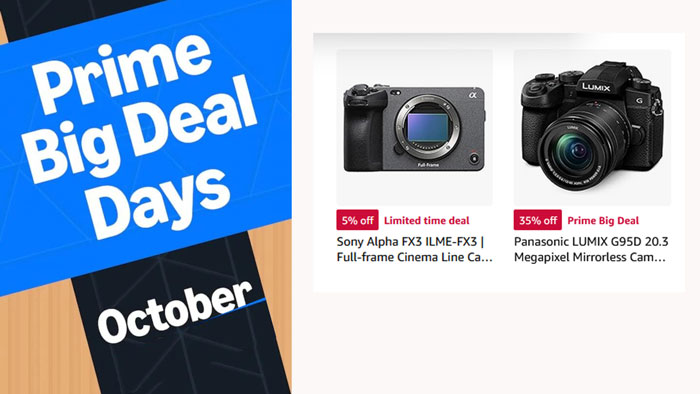
Amazon Prime Day Deals just started, right now I noticed two deals running, let’s have a look at the live deals
At the time of writing this article
- Sony FX3 – The camera is available at $3698 at Amazon.com and at $3698 at B&H Store
- Panasonic G95D (NEW OLED Display) is available at $649 at Amazon.com and Panasonic G95 available at $697 at B&H Store
Here is the link to the Amazon Prime Camera Deal Page
Support our website – Get products from our affiliates Amazon and B&H
Support us – Use or affiliate link Amazon.com | B&H Store for the next purchase u make – it helps us
By admin, on September 26th, 2024
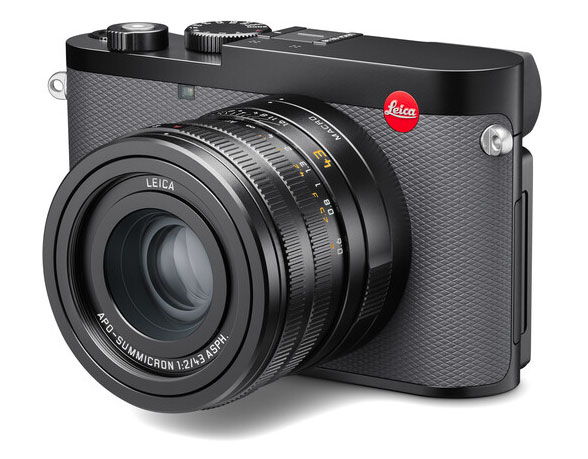
The Q3 from Leica has finally made its grand entrance as king of compacts This camera packs a 61MP Fullframe B CMOS sensor from Sony, along with Leica’s stunning 28mm f/1.7 Summux lens. Oh, and it can also 8K videos 30fps!
Leica Q3 comes loaded with top-notch features that it a fantastic choice for anyone into photography or videography. Here’s a quick look at 20 important features:
Support The New Camera – Use Our Affiliate to Get Your Next Camera – Leica Q3 at B&H Store
Top 20 Major Features of the NEW LEICA Q3
- A powerful 60MP full-frame CMOS sensor for amazing image quality & detail.
- The Summilux 28mm f/1.7 fixed lens which gives sharp, clear images, plus nice blurred backgrounds.
- Integrated image stabilization to keep your shots steady in both photos & videos.
- Macro mode for super close-up shots without needing another lens.
- The fast Maestro IV processor allows quick performance for both stills & moving pictures.
- It records in 8K at 30fps, plus 4K at 60fps & FHD at 120fps to capture high-quality videos.
- Phase-detection autofocus that focuses fast & reliably, even in tough situations.
- Intelligent AF with subject recognition—yes, it’s Leica’s first use of AI to help autofocus work better!
- A high-resolution electronic viewfinder provides a clear view for framing shots perfectly.
- The tilting rear LCD screen is flexible for capturing angles from different perspectives.
- You can use the Leica FOTOS app for easy wireless file transfers & updates.
- It has USB-C and HDMI ports for connecting external devices.
- Long battery life lets you enjoy all its features without worrying too much about running out of power.
- It’s got a compact magnesium body—durable yet lightweight with a premium feel.
- Wireless charging support (with an optional grip) makes shooting easier on the go!
- The in-camera perspective correction helps straighten lines in your architectural photos.
- Weather sealing means it can handle some dust & splashes without trouble.
- Customizable control buttons let you set the camera up just how you like it.
- Silent shutter mode is great for when you want to take photos discreetly.
- DNG and JPG formats give you flexibility based on your editing needs.
But like anything else, it has a few downsides of Leica Q3:
- The fixed 28mm lens might be limiting for folks who want to switch up lenses based on their needs.
- At 743g, it’s heavier than many other compact cameras out there.
- Its high price might not fit everyone’s budget.
- With no interchangeable lenses, some users may find their creativity held back.
- Some might feel the menu system is too basic if they’re into deep customizations.
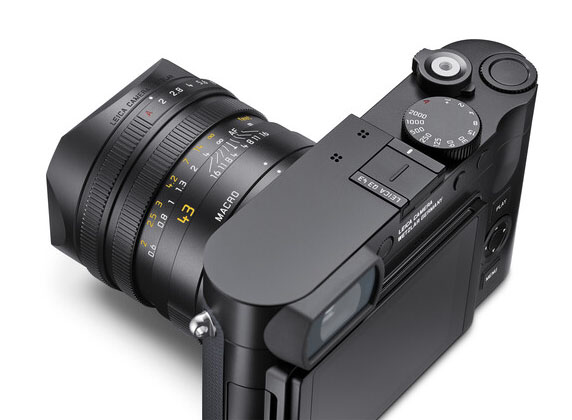
Leica Q3 vs Leica Q2 – A Bigh Jump Over Technology
Comparison between the Leica Q3 Compact camera and Q2
| Feature |
Leica Q3 |
Leica Q2 |
| Sensor |
60MP Full-frame CMOS sensor |
47.3MP Full-frame CMOS sensor |
| Processor |
Leica Maestro IV |
Leica Maestro II |
| Lens |
28mm f/1.7 Summilux |
28mm f/1.7 Summilux |
| Autofocus |
Phase-detection + contrast-detection |
Contrast-detection only |
| Video Recording |
8K at 30fps, 4K at 60fps, FHD at 120fps |
4K at 30fps, FHD at 120fps |
| ISO Range |
50-100,000 |
50-50,000 |
| Image Stabilization |
Optical Image Stabilization (OIS) |
Optical Image Stabilization (OIS) |
| Display |
3-inch tilting touchscreen LCD |
3-inch fixed touchscreen LCD |
| Viewfinder |
5.76M-dot OLED EVF |
3.68M-dot OLED EVF |
| Wireless Charging |
Supported (with optional grip) |
Not available |
| Connectivity |
USB-C, HDMI, Wi-Fi, Bluetooth |
USB 3.1, Wi-Fi, Bluetooth |
| Weather Sealing |
Yes, dust and splash resistant |
Yes, dust and splash resistant |
| Battery Life |
Up to 350 shots (CIPA) |
Up to 370 shots (CIPA) |
| Weight |
743g |
734g |
| Price (Approx) |
|
|
Leica Q3 Official Press Release
NEW: Leica Q3 43
The Unique, Compact Full-Frame Camera Now with a
New APO-Summicron 43 f/2 ASPH. Lens.
Teaneck, September 26th, 2024. In 2015, Leica Camera AG introduced a completely new camera segment with the launch of the Leica Q. Now in its third generation, the compact full-frame Leica Q3, with a fixed focal length of 28mm, inspires people all over the world. In addition to the unrivalled standards of design, workmanship, image quality and operation, the success of the Q-Family is especially attributed to its close dialogue with its users. Now, Leica fulfils a frequently expressed wish and introduces the Leica Q3 with a 43mm fixed focal length.
At the heart of the Leica Q3 43 is a unique, newly developed lens. The APO-Summicron 43 f/2 ASPH. not only joins the family of legendary Leica APO lenses, renowned among the best lenses in the world, but also distinguishes itself within Leica’s own lens portfolio. The focal length closely mirrors the natural perception of the human eye, enabling the creation of realistic, distortion-free images through the high-resolution OLED viewfinder. This makes the versatile 43mm focal length ideal for both for street photography and portraits. Like its sister model, the Leica Q3, the Leica Q3 43 also features an integrated macro mode for detailed close-ups and a leaf shutter for high-speed flash photography.
The Leica Q3 43 creates extraordinarily sharp, high-contrast images in any lighting condition thanks to its complex construction of the apochromatically corrected optical design, which includes four aspherical elements, while maintaining its compact, lightweight design. The new APO lens delivers superior performance at its maximum aperture of f/2 making it possible to separate subjects from the background with a harmonious bokeh. Combined with its outstanding ISO performance, the APO lens enables short exposure times, even in low light. Photos and videos can be taken at the 43, 60, 75, 90, 120 and 150mm focal lengths by using the frame lines displayed in the 5.76MP OLED viewfinder, or on the touch friendly tiltable monitor.
In addition to the lens, the Leica Q3 43 also differentiates itself visually from its sister model. The new grey leather stands out elegantly against the black camera body and celebrates the timeless design that Leica cameras are renowned for worldwide.
With easy-to-use Wi-Fi and Bluetooth connectivity, the Leica Q3 43 provides a seamless mobile workflow. Certified as a ‘Made for iPhone® and an iPad® accessory, it ensures an exceptionally smooth connection experience. When paired with the Leica FOTOS app, data transfers quickly and reliably, and creative Leica Looks can be easily loaded onto the camera. With the Leica Q3 43, Leica also introduces a new Leica Look: Leica Chrome. Leica Chrome can be applied to JPEGs, adding an analogue charm to one’s images. The expanding range of Leica Looks allows for the creation of unique, creative and striking images directly in the camera, ready to be instantly shared with the world via the Leica FOTOS app.
Both Leica Q3 models carry the same DNA. Like the Leica Q3, the BSI CMOS full-frame sensor with Triple Resolution Technology in the Leica Q3 43 gives you a choice between a resolution of 60, 36 and 18 megapixels. The camera’s ISO range of 50 to 100,000, coupled with a highprecision, fast hybrid autofocus system makes this robust IP52-rated device the perfect tool to capture your unique perspective. In addition, the Leica Q3 43 offers the possibility to connect external RØDE microphones via USB-C. Whether you’re shooting in 8K resolution or capturing stunning photos, this German-engineered camera seamlessly integrates into your daily creative routine, allowing you to capture stylish shots with unparalleled Leica quality in any situation.
The Leica Q3 43 fits comfortably in your hand, particularly when paired with the new optional multifunction protector crafted from sleek black leather. This protector includes an integrated grip, offers direct access to the battery, and can be swiftly mounted onto tripods thanks to its Arca-Swiss compatibility. The Leica Q3’s practical, comfortable and stylish accessories are all available for the Leica Q3 43. These accessories include a unique wireless charging handgrip that works with the elegant Drop XL Wireless Charger for inductive charging, a range of protectors and carrying straps in various leather colors, and a selection of stylish thumb rests, soft release buttons, filters and colorful round retro lens hoods. Each accessory enhances the individual look and functionality of the Leica Q3 43.
The Leica Q3 43 is now available worldwide at all Leica Stores, the Leica Online Store and authorized dealers. The retail price of the Leica Q3 43 is $6,895.00, and the new multifunction protector with integrated handgrip is $250.00.
Follow us on our social pages FACEBOOK | TWITTER | INSTAGRAM, get live news + Leica rumors 24X7
By admin, on September 24th, 2024
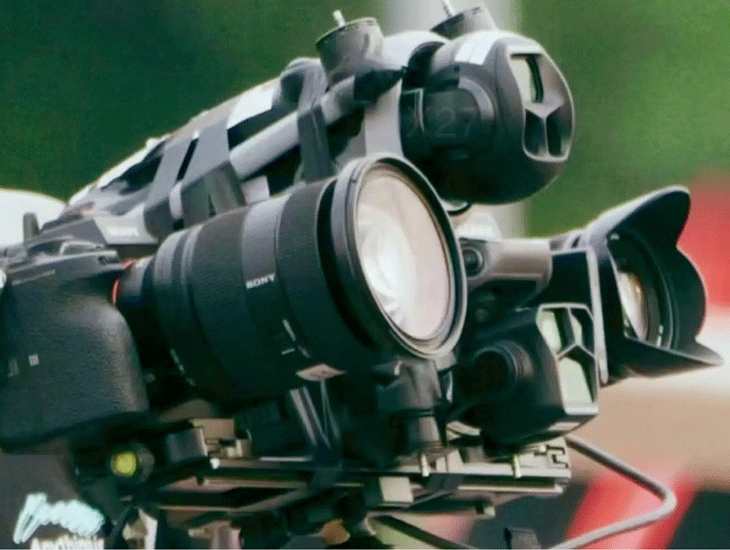
The latest leaked image of the DJI Mavic 4 Pro leaked today, as you can the drone is at the top, and on one side we have a Sony A7IV camera and on the other side we have the Panasonic S5 II, and a DJI MAVIC 3 PRO, just a little bit below in between the center of these two Mirrorless cameras.
DJI is upscaling the camera Mavic 4 Pro camera quality to the next level, that why they are doing multiple test with professional Mirrorless cameras to test, compare and tweak the DJI Mavic 4 Pro at its best, stay tuned for more updates coming.
Follow us on our social pages FACEBOOK | TWITTER | INSTAGRAM, If you have time –>see more Camera News and DJI Rumors
Sourc Jasperellens
By admin, on September 16th, 2024
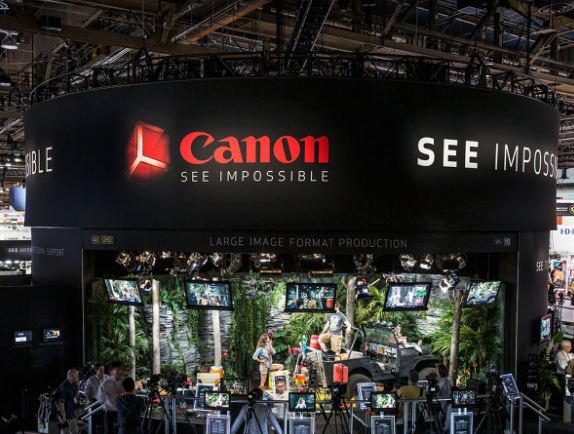
So according to our latest report, Canon is selling twice as many cameras as Sony in China. Recent reports suggest that Canon has captured more than 50% of the market share in China. As we all know, Canon is the leading camera manufacturer in the world.
- A Chinese social media account on Weibo shared a rare glimpse into China’s camera market, and it was surprising: Canon sold twice as many cameras as Sony and four times as many as Nikon. Weibo account Camera Obsession posted: “The 2024-2029 Digital Camera Industry
- Market Detailed Analysis and Development Strategy Research Report released by the China Academy of Industrial Research points out that well-known brands such as Canon, Nikon, Sony and Fuji are still dominant. Canon continues to lead the market with a market share of nearly 50% due to its strong research and technological development capabilities and brand influence. Sony and Nikon rank second and third with market shares of 26.1% and 11.7%, respectively.”
If we take a look at the past month’s BCN ranking
1st place: EOS R10 RF-S18-150 IS STM Lens Kit
2nd place: EOS R50 Double Zoom Kit Black
3rd place: EOS R50 Double Zoom Kit White
4th place: VLOGCAM ZV-E10 Power Zoom Lens Kit Black
5th place: VLOGCAM ZV-E10 II Double Zoom Lens Kit Black
6th place: OLYMPUS PEN E-P7 EZ Double Zoom Kit Silver
7th place: Z 30 Double Zoom Kit
8th place: VLOGCAM ZV-E10 Double Zoom Lens Kit Black
9th place: VLOGCAM ZV-E10 Double Zoom Lens Kit Black
(※9th place seems to be a mistake for the ZV-E10 II Power Zoom Lens Kit Black)
10th place: LUMIX G100D W Kit
So, that clearly means Canon is selling very well in China, let’s hope Canon will continue to hold its position in the future also
also see Canon SMAR Glass Patent published here
Canon Working on Foldable Display Vlogging Cameras
Support us – Use or affiliate link Amazon.com | B&H Store for the next purchase u make – it helps us
|
KEEP THIS BLOG ALIVE - Support New Camera Buy Canon Lenses, Buy Music CD or Digital Camera at amazon it helps this site, and you do not pay anything extra, it is just a way to help support this site.

|

















